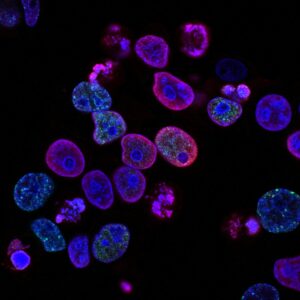If you’ve ever built something with LEGO blocks, you’ll know that you can create all sorts of shapes and structures with the same basic pieces. Similarly, DNA doesn’t always exist in the same form inside the cell; it can be organized into various structures like chromosomes, plasmids, and even as loose strands. Let’s dive into how DNA is packaged and the different structures it can take.
Basic DNA Structure: The Double Helix
You already know that DNA exists primarily as a double helix, a shape that looks like a twisted ladder. The steps of this ladder are composed of base pairs (A-T and C-G), while the sides are made up of sugar-phosphate backbones. But here’s the thing: your DNA is extraordinarily long. If you stretched out all the DNA from a single human cell, it would be about 6 feet long! Clearly, that won’t fit inside a microscopic cell without some sort of organization.
Supercoiling: The First Level of Compaction
Before diving into chromosomes, let’s discuss “supercoiling.” Just like you might coil a garden hose to store it neatly, DNA is often coiled upon itself to save space. Enzymes like topoisomerases help in this process. Supercoiling makes the DNA more compact, but it’s just the first step in a series of organizational levels.
Nucleosomes: DNA’s Bead Necklace
The next level is forming nucleosomes. Imagine winding your DNA around eight little protein spools called histones. These DNA-wrapped histones resemble beads on a string and are known as nucleosomes. This arrangement helps to condense the DNA, but it also plays a role in gene regulation—basically, deciding which genes are turned “on” or “off.”
Chromatin: The Fiber
When nucleosomes pack together, they form a fibrous structure called chromatin. Think of it as a thicker string made from the “bead necklace” of nucleosomes. Chromatin can exist in a relaxed form known as “euchromatin,” where genes are generally accessible for reading and transcription into RNA. The other form, “heterochromatin,” is more tightly packed and generally contains genes that are turned off.
Chromosomes: The Ultimate Organization
So, how do we go from chromatin to chromosomes? When a cell is ready to divide, the chromatin fibers coil and condense even further to form chromosomes. These are the X-shaped structures you may have seen in biology textbooks. Humans usually have 46 chromosomes (23 pairs), including one pair of sex chromosomes (XX for females, XY for males).
Parts of a Chromosome
- Centromere: The point where the two “arms” of the chromosome meet.
- Telomeres: The protective caps at the ends of each chromosome, which prevent it from fraying, much like the aglets on your shoelaces.
- Arms: The “p arm” is the short arm, and the “q arm” is the long arm of the chromosome. These arms contain various regions, each with multiple genes.
Other DNA Structures
Plasmids
These are small, circular pieces of DNA found mainly in bacteria but also in some eukaryotic organisms. Unlike chromosomes, plasmids are not essential for basic cellular functions, but they often contain genes that can provide an advantage, like antibiotic resistance.
Mitochondrial DNA
This is a unique form of DNA found in the mitochondria, the cell’s energy factories. Mitochondrial DNA is circular, much like bacterial DNA, and is passed down only from the mother.
Viral DNA
Some viruses also contain DNA, but they don’t have the machinery to replicate it. Instead, they inject their DNA into host cells and hijack the cell’s replication apparatus to make copies of themselves.
Packaging in Prokaryotes
In prokaryotic cells like bacteria, DNA is generally not wrapped around histones and doesn’t form chromosomes. Instead, it exists as a singular, circular molecule located in a region called the nucleoid. Despite being simpler, this arrangement is highly efficient for the bacterial lifestyle.
Why Is DNA Packaging Important?
- Efficiency: Properly packaged DNA fits into the cell’s nucleus.
- Regulation: The way DNA is packed can control which genes are accessible for transcription.
- Protection: Tightly coiled DNA is less susceptible to damage.
- Inheritance: Organized DNA ensures that genetic material is evenly divided between daughter cells during cell division.
Summary
DNA isn’t just floating around like a tangled mess in your cells. It’s organized into complex structures, each serving unique roles. From the supercoiled double helix to the mighty chromosomes, these various forms of DNA enable the complex functions that sustain life as we know it. Understanding these structures not only helps you appreciate the beauty and complexity of life but also opens doors to understanding advanced topics like genetics, biotechnology, and medicine.





